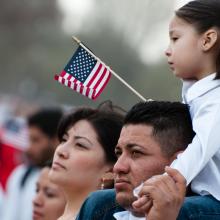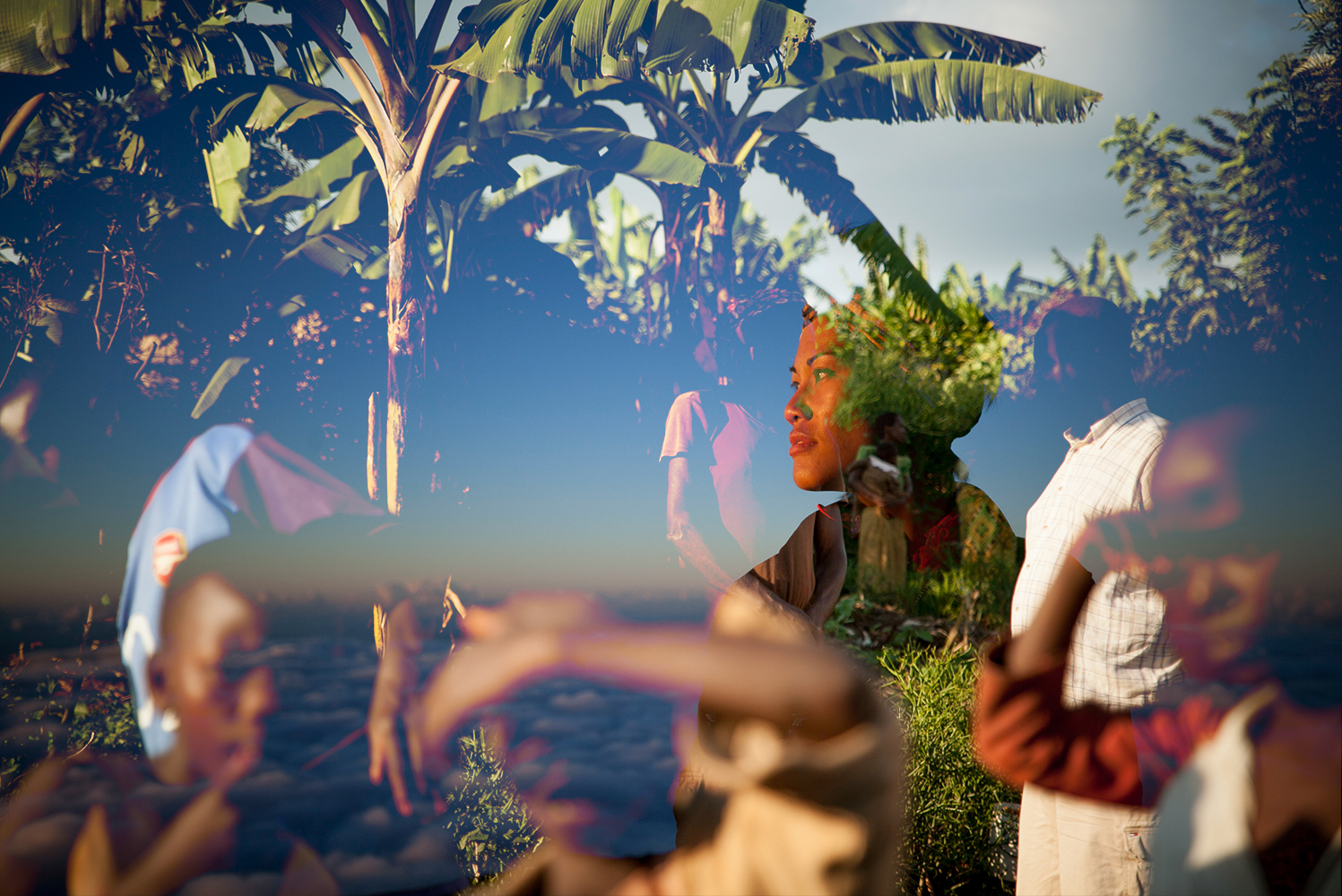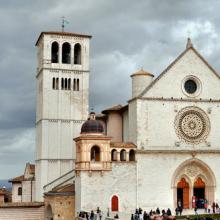pilgrimage
The Miracle Club, starring Maggie Smith, Kathy Bates, and Laura Linney, is itself something of a miracle: Despite being attached to a major star (Smith) and a compelling story, the film, directed by Thaddeus O’Sullivan, almost never came to fruition.
IN COLOMBIA, the highest rainfalls in 40 years had reduced coffee production by nearly one-third at the end of 2022. In the United States, tornado deaths for the first quarter of 2023 were already nearing the annual average. In Jakarta, Indonesia, the government barrels forward with constructing a 29-mile sea wall to protect the city, which is sinking under rising sea levels.
Everywhere, the planet is changing. Land once known for certain weather patterns, flora, and fauna is becoming strange and unfamiliar. Ways of life forged from old patterns are crumbling. Communities scramble to find new ways to farm, fish, graze, and live in what increasingly feels like uncharted territory.
Many have taken up the language of grief and loss to guide us through this turbulent era. Australian philosopher Glenn Albrecht even coined the term “solastalgia,” which describes “the homesickness you have when you are still at home.” We long for the forests and meadows of our childhoods, alive with spring peepers and monarch butterflies, which today seem diminished or have completely disappeared, paved over by strip malls and subdivisions. The land that shaped us is still there, but it’s not the same.
MOST OF THE friends I grew up with in church youth group don’t call themselves Christians anymore. They left church behind years ago. Yet here I am, still a very churchy Christian. Why have I stayed in the faith after all these years? Why do we keep doing this Christian thing?
We are tempted to convince ourselves that God will reward our faithfulness with blessings—either in this life or the next. This is a Christian logic as old as the Bible, a theology taken from the lips of Jesus himself: “Your Father who sees in secret will reward you” (Matthew 6:4). Prosperity theology isn’t an aberration but a perennial Christian impulse, an urge within all of us as we try to justify to ourselves our faith.
This way of thinking about beliefs, according to Meister Eckhart, turns God into a cow. “People look upon God with the eyes with which they look upon a cow,” he preached in the 14th century. “To love God the way they love a cow, because it gives you milk and cheese. This is how people behave who want to love God because of external wealth or inner comfort ... they love their self-interest.”
This month’s stories from Mark’s gospel invite us into the disciples’ struggle to understand why they’ve chosen to follow Jesus. Discipleship, we’ll discover, is a constant exposure to the selfish motives for our faith as we stumble into God’s truth—that, as Eckhart preached, “God loves us without a why.” God loves us without a reason, without making calculations. God loves us because God loves us.
I kept examining these ancient walls. Often, they were slabs of granite laid on top of one another, with thousands of pieces. Their age and the constant moisture of the air in Galicia, blowing from the sea miles away, meant walls were covered the moss, and vegetation wove through them like a net, holding them in place. Certainly, some of this was engineered as the pilgrimage gained in popularity, and political and religious authorities invested in the Camino’s infrastructure.
The day that I and my three American companions left the Albergue Turistico de Salceda and walked our final 20 miles into the Santiago, arriving exhausted but thrilled in front of the Cathedral, the city was thronged with pilgrims. This happens day after day. But who are these people? Why do they make this journey? And what does this say about the future of faith?
The great temptation for the church is to remain settled in its comfort zone, doing the same routine. While it may be on the course to a slow death, it can get by and not feel much pain. But the people of God are never meant to be settled; they are called to join in God’s transformational mission in the world, bringing God’s intended justice, healing, and reconciliation to a wounded creation. This requires an intentional commitment by the church to embark on a pilgrimage.

Image via Ryan Rodrick Beiler / Shutterstock.com
Seven years ago, on a cold day in December 2009, I entered Elizabeth Detention Center in Elizabeth, N.J. — a minimum-security prison on a pilgrimage organized by the Interfaith Center of New York and Human Rights First. This one-day journey ushered me into the story of immigrants in the New York and New Jersey area, and changed my life.
What if the hardest thing in my spiritual life is to accept the abundant life that Jesus promises? What if the biggest challenge, for some of us who struggle with the sins of self-loathing and shame, is to receive love and to feel joy? Could—should— penitence look different? Might it mean wallowing less and embracing more?
I pretend to be a hermit. I’m shy and always have been. I’m introverted, too, which isn’t the same thing; being with others, especially in large groups, simply saps my energy.
But in my heart, I want to be the pilgrim. One obstacle: Despite the Bible’s repeated admonitions not to be afraid, I am. Yes, I fear disappointing God. But — true confession — my greater fear on this trip, and a sign, no doubt, of my mixed-up priorities, was that I might somehow be deemed unworthy, unwanted, by my fellow pilgrims.
I weaved my way past, trying to find the right angle. All I wanted was to get a good look at the image of Christ Pantocrator — that is, Almighty — that crowns the inside of the dome at the center of the church. But there were too many walls and too many obstructions. No matter where I stood, every view was partly blocked. No matter what I did, I could never quite see all of Jesus.
Since I was born Baptist, I think I was taught in utero to be skeptical of all this Roman Catholic stuff. Of Mary. Of popes and princes. Of these incense-tainted, saintward prayers. Of the overreliance on the heritage that traces back to St. Peter (though of course we would never have called him St. Peter). At one point, our guide said, “Upon this rock, I build my church blah blah blah.” She meant no disrespect. Yet it was one of the funniest, most unwittingly perfect things she has said, pithily capturing our sometimes-cavalier attitude toward this church and, for some of us, institutional religion more broadly.
A pilgrimage must go places we neither know nor completely understand. It’s an expression of faith — real or imagined, a mountain or maybe just a mustard seed. It acknowledges that we want and need more. More what? Perhaps courage. Maybe trust. Certainly a sense that we shouldn’t fear our doubts.
Here is what I packed with me for my pilgrimage, aside from too many clothes and shoes: Fear about spending the next week with a large group of strangers, some of which is my shyness and introversion and some of which is trepidation about being in a space where I’m the only non-white person and the only gay person (a diversity twofer!). Anger at what’s happening in the U.S. — which my passport, but not always the rhetoric, tells me is my country. Worry about the journey ahead. Longstanding doubts about God and faith and this thing we call church and whether any of it makes sense.
These moments of wonder, beauty, and human connection — the simplicity of walking one foot in front of the other each day, open to conversation and observation of the time and space around you — are the elements of pilgrimage for which I am most grateful. As cliche as it sounds some 500 kilometers later, I really do feel like my pilgrimage is just beginning.
I believe pilgrimage, like God, is all around us and within us. And whether we are on this path for the first time or the 199th, there is still something here for us. Maybe not a revelation, but a noticing, a paying attention, a shifting our gaze from ourselves to the sky or the children’s laughter at the park.
If we approached this day as pilgrimage, a wandering toward creation, toward God, toward each other, toward the Earth and sky and stars, how might we see the world?
IN 1998, AWARD-WINNING writer Linda Lawrence Hunt and her husband, Jim, were forced to consider a question no parent wants to ask: How do you find meaning in life after losing your child?
Their 25-year-old daughter, Krista Hunt Ausland, had just died in a bus accident in Bolivia while volunteering with the Mennonite Central Committee.
“Your joys become more intense,” consoled a friend whose family had also lost a child.
This resonated with Linda, especially since Krista was known for her energy and enthusiasm. Linda and her husband, now retired professors of English and history at Whitworth University, had always encouraged Krista to travel and take part in community service, but even they were amazed by the intense joy Krista exuded serving as a school teacher in inner-city Tacoma, Wash., or volunteering in poor communities in Latin America. Writing about that joy might help to recover some of it in Linda’s own life, she thought.
Fifteen years later, Linda’s newest book is more than just an ode to a remarkably happy daughter. Pilgrimage through Loss: Pathways to Strength and Renewal after the Death of a Child is a collection of ideas and insight from more than 30 parents who decide in their darkest hours to “face grief in creative and intentional ways.” The book, which contains study questions at the end of each chapter and references new research on grief, is intended as a resource for grieving parents, as well as for those hoping to support them in the right ways and at the right times. “Closure is an illusion,” explains Linda, but she describes multiple examples of parents finding strength and even joy in sacred spaces and rituals, as well as in giving and receiving symbolic acts of kindness.

I was a reluctant artist, self-doubting leader and a broken soul.
I was in search of healing.
After a series of traumatic experiences that culminated with my hospitalization in Zambia, I went on a sabbatical in search of courage, tenacity, and renewal to continue in my vocation. It was early 2014, and we were entering into the year commemorating 20 years since the genocide in Rwanda. During this time, my mentors were leading a pilgrimage to Uganda and Rwanda to journey through places of immense pain and tremendous hope as a means to engage in the pain and hope in one’s active life. Because of my closely related work in Africa, I didn’t want to go — I knew I would have to intentionally delve into the hellish reality of a violent massacre I knew very little of. Simultaneously, I knew that by stepping into the pain, I would find the hope I was so desperately searching for. And so, together with eight other pilgrims, I went. We journeyed alongside of survivors and perpetrators of genocide as an attempt to identify in the incomprehensible pain that oppresses us all. It was through this experience that healing came in a profound way.
Having just gotten home from guiding another The Global Immersion Project Learning Community deep into the lives of the unheralded heroes in the Holy Land to learn from their often untold stories, I am processing emotions, thoughts, and reflections that will soon bud into a renewed set of practices at home and abroad. I have now been to Israel/Palestine quite a few times, and it would be easy to think the experience becomes mechanical or normal or whatever. Well, for me, that simply hasn’t been the case. We encourage our participants to enter the experience in the posture of a learner rather than a hero. I try to do the same, and in doing so, am continually convicted, challenged, and inspired by our remarkable friends and peacemakers embedded within this conflict.
Here are 7 learnings that have risen to the surface since landing back on home soil:
The annual pilgrimage to Mecca, known as the hajj, presents a gantlet of health challenges. This year’s pilgrimage, which falls Oct. 13-18, is no different.
Of particular concern is the Middle East Respiratory Syndrome coronavirus, which was first reported in Saudi Arabia last year. At least 120 cases have been reported in the country, including 49 deaths, according to the World Health Organization and Saudi officials.
Ancient stones, steep stairs, and sparkling fresh air greeted me upon arrival in Assisi, Italy, a month ago. Lush olive groves, leaves iridescent in the sun, offset the city stones. “What sort of place is this, that shaped St. Francis 800 years ago?” I asked myself. Eager to deepen my understanding of the saint, I had returned to Assisi to walk in the footsteps of St. Francis.
Profligate playboy, drama king, dejected knight, young Francis lived life large. He grew up in turbulent times, with civic unrest in Assisi and war with nearby Perugia surrounding him. Returning from a year as a prisoner of war in Perugia, sick and weak, Francis drifted. When he sold his cloth merchant father’s wares to repair a church, his father chained him in punishment. Francis stripped in public, denouncing his father. Unlikely material for a saint.
Yet God shaped Francis over time, and Francis yielded. A simple saint, Francis wanted one thing. Nothing but God, he proclaimed, shedding all else. He chose a life of simplicity, serving the poor, and calling the church to reform.
WHICH SCRIPTURES WILL our biases tempt us to sidestep this month? Perhaps 2 Timothy? Not usually the favorite of radicals. Whether actually written by Paul just before his death or worked up later by followers, the letter has a certain poignancy, suggesting the waning of Christianity’s pioneer phase. The church is in for the long haul. Its faith needs to find forms that can be transmitted across generations. It needs patient leadership that will be consistent in the face of inauthentic mutations of the gospel, religious imposters, and the distraction of futile controversies—hence the emphasis on sound teaching, the internalized treasure of the creed.
Let’s honor this recognition within scripture itself that the gospel needs institutions. The church must even risk banality in some of its teaching practices. A great interpreter of the Christian mystical tradition, Friedrich von Hügel, invites us to respect the way radical teachings have to be given forms that can be handled by regular folks, not geniuses. “Is there not a pathetic instruction in watching the insertion of the copper alloy into the pure gold ... that is, a metal sufficiently resistant to the clumsy handling of the multitude to be able to persist in the transmission of a value, and indeed a precise value, even though it be not the highest. There is surely a pathos here most thoroughly characteristic of the abiding limitations and homely needs of our poor humanity.”
















